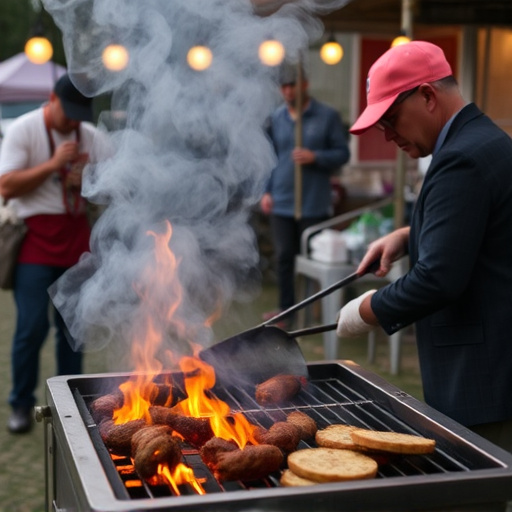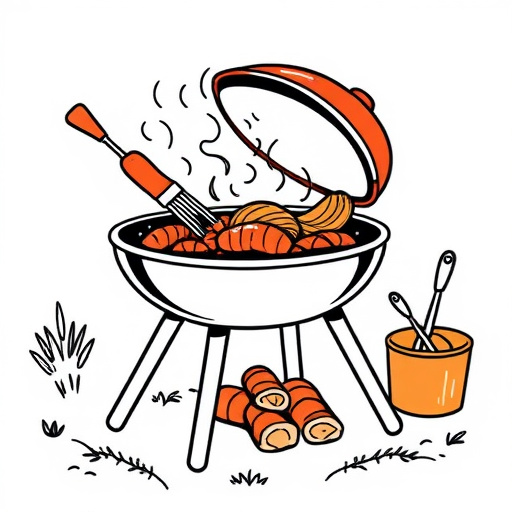Brisket, a beloved BBQ staple, offers a unique culinary experience with its distinct marbling and tender texture when cooked correctly. For the perfect BBQ brisket recipe, choose a high-quality cut with a thick fat cap, use a dry rub for depth of flavor, and employ a slow cooking method (225°F – 250°F) to break down connective tissues. Start with preheating your smoker or oven, cook for several hours until the internal temperature reaches 203°F (95°C), and rest the brisket for at least 30 minutes post-cooking. Our step-by-step guide ensures a deliciously tender, juicy BBQ brisket perfect for weekend gatherings.
“Unleash the ultimate weekend culinary experience with tender, juicy BBQ brisket – the perfect centerpiece for leisurely meals. This comprehensive guide delves into the art of preparing this coveted cut. From understanding the brisket’s unique properties to mastering smoking techniques, we’ll navigate you through the process. Learn how to select the ideal meat, create a mouthwatering dry rub, and achieve a tender, flavorful result that will impress. Discover the magic of transforming a simple weekend meal into an unforgettable BBQ brisket feast with our step-by-step recipe.”
- Understanding Brisket: The Cut and Its Tenderness
- Why Weekend Meals Are Perfect for BBQ Brisket
- Selecting the Right Brisket for Your Recipe
- Dry Rub: Enhancing the Flavor Profile
- Smoking Techniques for Maximum Juice and Tenderness
- Cooking Times and Tips for a Perfectly Cooked Brisket
- Servings Suggestions and Accompaniments
Understanding Brisket: The Cut and Its Tenderness
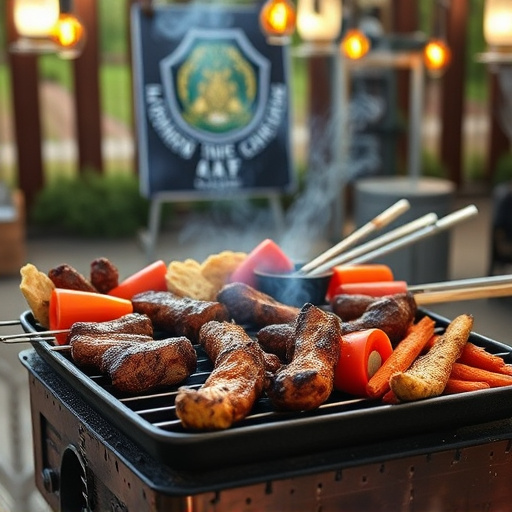
Brisket, a cut from the beef chest, is a favorite among BBQ enthusiasts for its unique marbling and immense tenderness when cooked properly. It’s no surprise that this meaty and flavorful steak is a go-to for leisurely weekend meals. When preparing a bbq brisket recipe, it’s crucial to understand the cut’s characteristics; Brisket consists of two muscles: the leaner, more tender flat and the fattier, more marbled point. Both these sections merge when cooked slowly over low heat, resulting in a melt-in-your-mouth texture that makes it perfect for slow-cooked dishes.
The key to achieving a tender brisket lies in the cooking process. Due to its high fat content, brisket requires low and slow cooking methods like smoking or braising to break down the connective tissues, making it incredibly juicy and soft. This time-consuming technique is what transforms a tough cut of meat into an exquisite dish, ensuring your weekend meals are memorable and satisfying.
Why Weekend Meals Are Perfect for BBQ Brisket
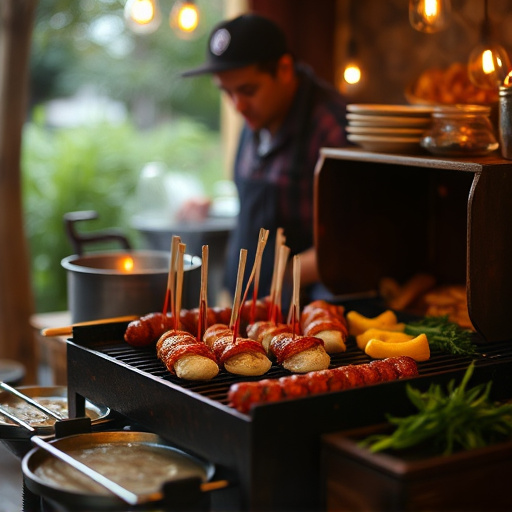
Weekend meals are an ideal time to indulge in a slow-cooked, tender BBQ brisket recipe. The leisurely pace allows for the meat to be prepared over low and steady heat, resulting in a melt-in-your-mouth texture that’s hard to achieve during weeknights. With more time on your hands, you can also focus on creating a flavorful rub or experimenting with different smoking techniques to elevate your brisket game.
A BBQ brisket recipe for the weekend means you can gather friends and family around the table, enjoy delicious, hearty food, and create lasting memories. It’s a chance to relax, savor each bite, and share laughter over a hearty meal that’s sure to become a favorite among your household.
Selecting the Right Brisket for Your Recipe
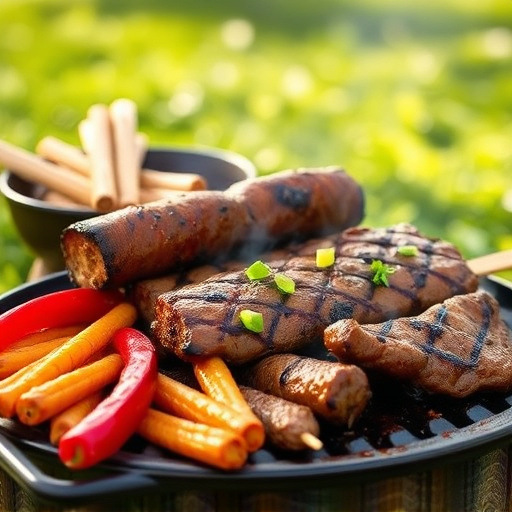
When it comes to crafting a mouthwatering BBQ brisket recipe, choosing the right cut is paramount. Opt for a high-quality, well-marbled brisket with a good fat cap. This ensures even cooking and adds flavor throughout. Look for meat that’s between 1.5 to 2 inches thick, allowing for slow, moist heat to tenderize it without overcooking the exterior.
Consider the source as well; USDA-inspected, grass-fed brisket from a reputable supplier is ideal. Freshness matters; choose a cut that was recently processed for best results. This attention to detail will make all the difference in your final dish, ensuring a succulent, tender brisket perfect for leisurely weekend meals enjoyed with loved ones.
Dry Rub: Enhancing the Flavor Profile
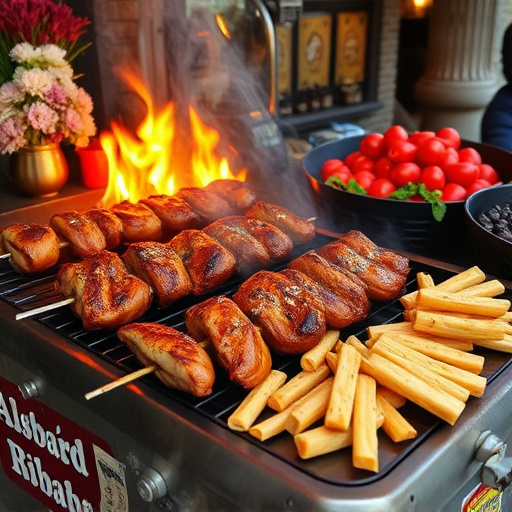
Dry rub is a crucial element in crafting the perfect BBQ brisket recipe, adding depth and complexity to its flavor profile. This simple blend of spices is what transforms a humble cut of meat into a delectable weekend treat. By massaging the dry rub into the brisket before slow-cooking it, you create a symphony of flavors that tantalize the taste buds. The combination of salt, pepper, chili powder, and other aromatic spices not only enhances the meat’s natural juices but also contributes to its tender texture.
As the brisket cooks slowly over low heat, the dry rub caramelizes, sealing in the moisture and creating a crusty exterior that contrasts with the incredibly tender and juicy interior. This technique is a game-changer for any barbecue enthusiast looking to elevate their weekend meals. With just a few simple steps, you can transform a standard BBQ brisket recipe into an unforgettable culinary experience, perfect for sharing with folks who appreciate the art of slow-cooked perfection.
Smoking Techniques for Maximum Juice and Tenderness
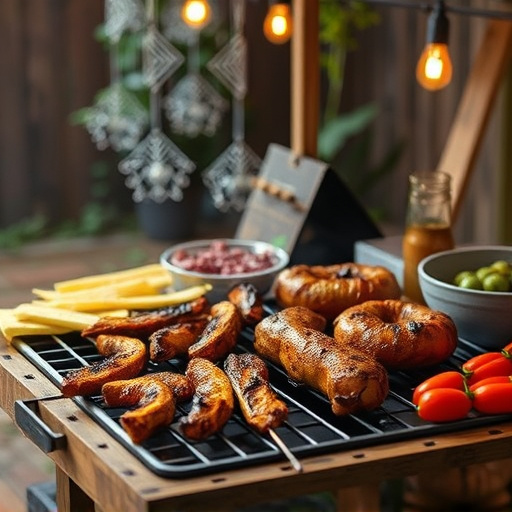
When preparing a bbq brisket recipe, the smoking technique plays a crucial role in achieving maximum juice and tenderness. The slow, low-temperature smoking process is key to breaking down the tough muscle fibers in the brisket, resulting in a melt-in-your-mouth texture. Ideal smoke temperatures range between 225°F to 250°F (107°C to 121°C), allowing for a steady cook that retains moisture and flavor.
Use of hardwoods like oak, hickory, or mesquite adds depth and complexity to the meat’s flavor profile. The smoke gradually infiltrates the brisket, transforming its interior while gently caressing the exterior with a crispy, golden crust. Patience is paramount; taking your time ensures that the brisket stays moist, leading to a juicy, tender end product that’s perfect for leisurely weekend meals.
Cooking Times and Tips for a Perfectly Cooked Brisket
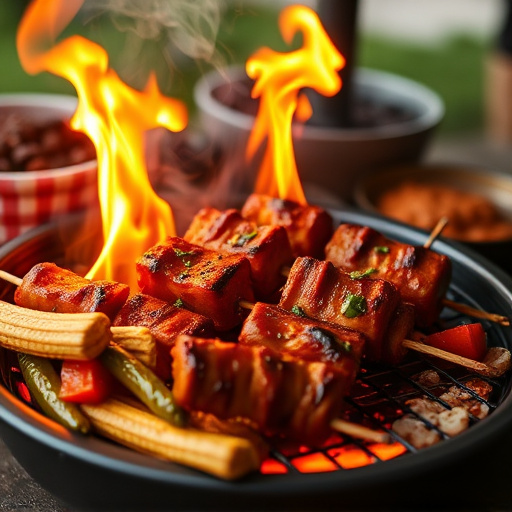
Cooking a tender, juicy brisket is an art that every self-respecting barbecue enthusiast should master. The key to a perfectly cooked bbq brisket recipe lies in patience and understanding the science behind it. It’s a slow process, but the result—a melt-in-your-mouth texture—is worth the wait.
First, choose a high-quality cut of brisket with good marbling. This will ensure even cooking and juicy results. Preheat your smoker or oven to the ideal temperature, typically around 225°F (107°C). The low and slow method is crucial; brisket is best cooked for several hours until it reaches an internal temperature of about 203°F (95°C). Use a meat thermometer to monitor the temperature, and remember to flip the meat occasionally for even cooking. Add wood chips or chunks for smoke flavor, but be mindful not to over-smoke it. Resting the brisket for at least 30 minutes after cooking allows the juices to redistribute, ensuring a moist and tender final product.
Servings Suggestions and Accompaniments
